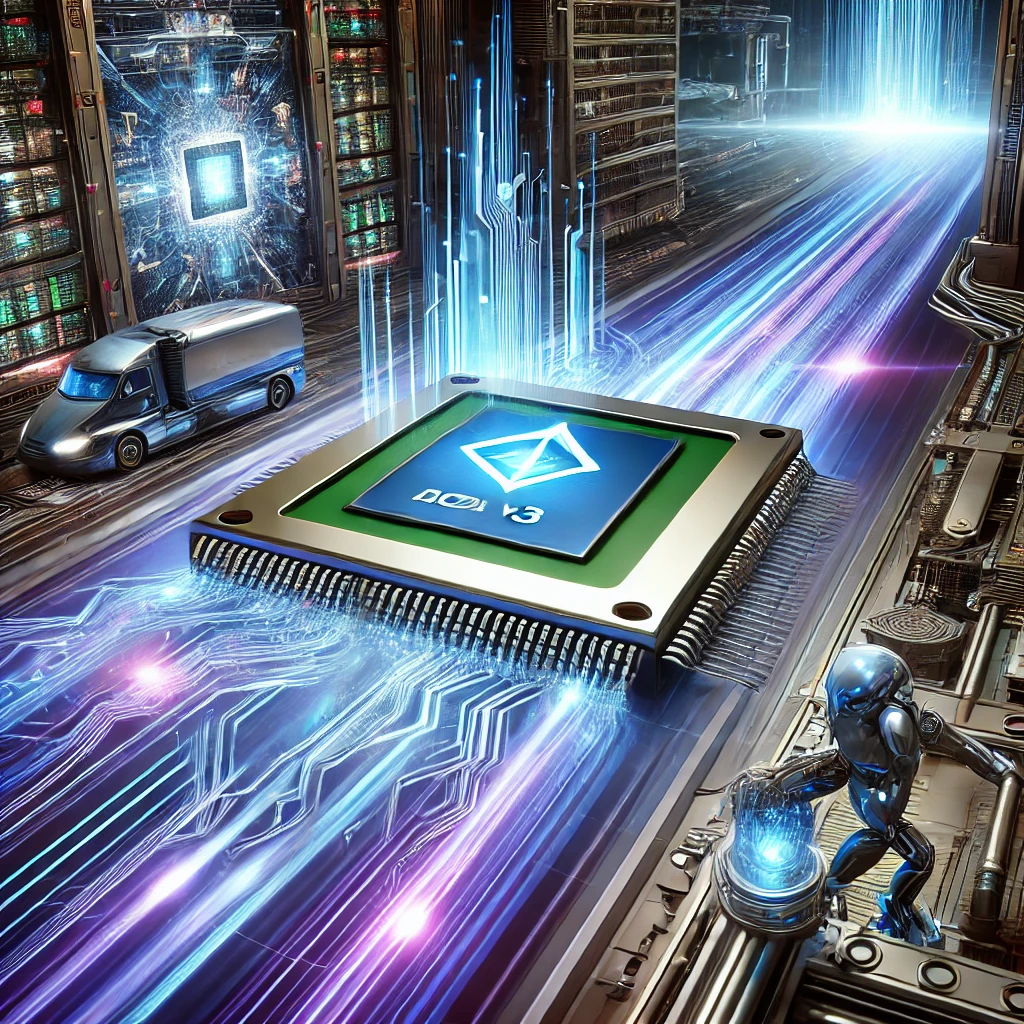Introduction
In the rapidly evolving landscape of artificial intelligence, hardware innovation is critical to unlocking the full potential of AI models. Groq, a trailblazer in AI acceleration, has consistently pushed boundaries with its unique tensor streaming architecture. While Groq has not officially announced a “V3” product, this article explores the hypothetical advancements a third-generation Groq processor could embody, building on the company’s legacy of speed, efficiency, and deterministic performance.
Groq’s Legacy: A Foundation for Innovation
Groq made waves with its Language Processing Unit (LPU), designed to tackle the computational demands of large language models (LLMs). Unlike traditional GPUs, Groq’s architecture employs a deterministic execution model, eliminating scheduling uncertainties to deliver predictable, ultra-low latency. This approach has proven transformative for real-time AI applications, from autonomous vehicles to real-time translation.
Envisioning Groq V3: Key Innovations
- Enhanced Tensor Streaming Architecture
- Scalability: A V3 chip could integrate more tensor streaming processors (TSPs) on a single die, boosting parallel processing capabilities.
- Memory Bandwidth: Advanced memory hierarchies, such as 3D-stacked HBM3E, might address memory bottlenecks, enabling faster data access for massive models.
- Sparsity Support: Leveraging sparse computation techniques to accelerate inference on pruned models, reducing redundant calculations.
- Software Advancements
- Compiler Optimizations: A next-gen compiler could auto-optimize models for Groq’s architecture, expanding support for frameworks like PyTorch and JAX.
- Developer Tools: Enhanced profiling and debugging tools to streamline deployment across industries.
- Energy Efficiency
- Process Node Shrink: Transitioning to a 3nm process could reduce power consumption while increasing transistor density, crucial for data centers and edge devices.
- Dynamic Power Management: Real-time adjustments to power usage based on workload demands.
- Deterministic Latency 2.0
- Refinements in execution pipelines to further minimize latency, ensuring sub-millisecond response times for critical applications like robotics and healthcare.
Performance Benchmarks: A Leap Forward
While speculative, Groq V3 could achieve unprecedented throughput—potentially exceeding 1,000 tokens per second for models like GPT-4. Benchmarks might showcase 2-3x improvements over predecessors in tasks such as batch inference and image generation, rivaling competitors like NVIDIA’s H200 and Google’s TPU v5.
Use Cases: Transforming Industries
- Autonomous Systems: Real-time decision-making for drones and self-driving cars.
- Healthcare: Instant analysis of medical imaging and genomic data.
- Edge AI: Deploying LLMs on smartphones and IoT devices.
- Cloud Providers: Cost-effective, high-density inference for global scale.
Competitive Landscape
Groq V3 would compete on latency and efficiency rather than raw FLOPs. While NVIDIA dominates with CUDA ecosystems, Groq’s strength lies in niche applications requiring predictability. Compared to Cerebras’s wafer-scale engines or AMD’s MI300X, Groq’s focus on software-hardware co-design offers a unique value proposition.
Challenges and Future Outlook
Adoption hurdles remain, including developer familiarity and ecosystem lock-in. However, as AI shifts toward specialized inference, Groq’s architecture is well-positioned to thrive. Future iterations may integrate photonics or in-memory computing to further disrupt the status quo.
Conclusion
Though hypothetical, Groq V3 represents the logical evolution of a company redefining AI hardware. By prioritizing deterministic performance, energy efficiency, and scalability, Groq could cement its role as a catalyst for real-time, ubiquitous AI. As the industry races toward artificial general intelligence (AGI), innovations like Groq V3 will be pivotal in turning theoretical possibilities into practical realities.
—The future of AI isn’t just faster; it’s smarter, leaner, and infinitely more responsive. Groq’s vision brings us one step closer.
